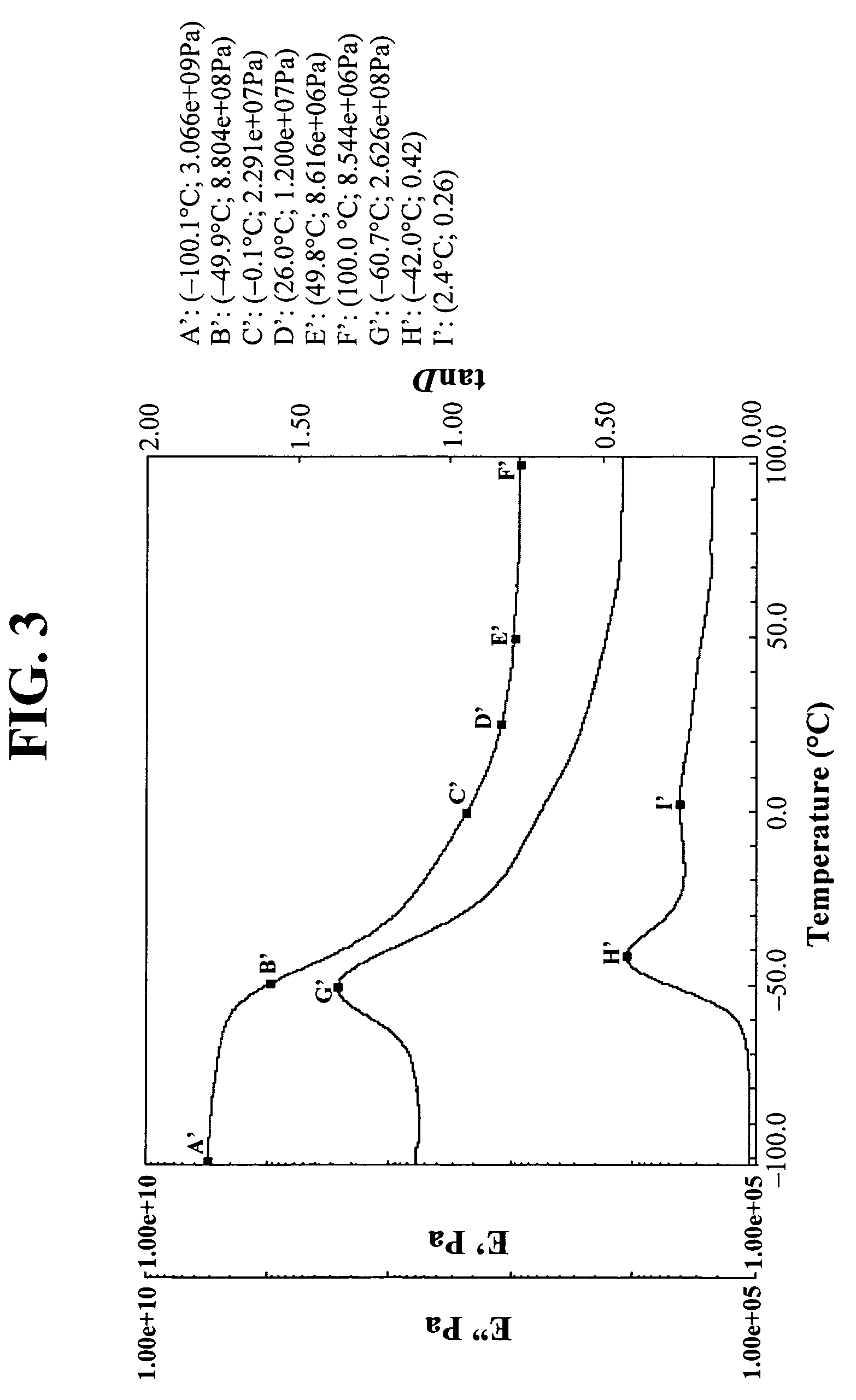Low out-gassing room temperature curable rubbery polymer, preparation thereof and device comprising same
a technology of rubbery polymer and room temperature, which is applied in the direction of adhesives, epoxidised polymerised polyene adhesives, adhesive types, etc., can solve the problems of difficult formulation of materials that cure to soft, and inability to cure to soft materials. soft, compliant, and low outgassing of adhesives
- Summary
- Abstract
- Description
- Claims
- Application Information
AI Technical Summary
Benefits of technology
Problems solved by technology
Method used
Image
Examples
example 1
The Present Invention
[0132]The following A and B compositions were prepared:
[0133]Composition A:
[0134]
58.00%Kraton Liquid Polymer L-207 from KratonThis is a hetero-telechelic polymer consisting essentially of ahydrogenated polybutadiene polymer that has a primaryhydroxyl functionality on one end and an epoxidizedisoprene functionality at the other end.4.00%OXT-221 bis{[1-ethyl(3-oxetanyl)]methyl}ether from ToagoseiCo., Ltd., Nagoya, Japan.38.00%TJFS05 Silica powder (4F International Co., Greenville, FL.)surface treated with 0.5% Silquest A-186 (beta-(3,4-epoxycyclohexyl) ethyl trimethoxy silane) from GE OSi Specialties,Greenwich, CT.
[0135]Composition B:
[0136]
49.00%Bisphenol A ethoxylate (2EO / phenol) from Sigma Aldrich Inc.,St. Louis, MO.50.00%TJFS05 Silica powder from 4F International Co., Gainesville,FL.1.00%Triphenylcyclopropenylium hexafluoroantimonate from SpectraGroup, Millbury, OH.
[0137]Compositions A and B were made by weighing the substituents into a 100 mL reaction kettle. ...
example 2
The Present Invention
[0146]Example 2 uses the same Composition A as Example 1.
[0147]Composition B:
[0148]
59.00%Bisphenol A ethoxylate (2EO / phenol) from Sigma Aldrich Inc.,St. Louis, MO.40.00%TJFS05 Silica powder from 4F International Co., Gainesville,FL.1.00%Triphenylcyclopropenylium hexafluoroantimonate from SpectraGroup, Millbury, OH.
[0149]Composition B was made just as in Example 1. Compositions A and B were there transferred to a 10:1 two-part syringe, dispensed and cured just as in Example 1. The cured sample was subjected to the ASTM E-595-93 (1999) outgassing test. Data of the test results presented in TABLE III below indicate that the cured material passed the test.
[0150]
TABLE IIIExample 2Specification% Total Mass Loss0.634%% Collected Volatile Condensable Materials0.064%% Water Vapor Regain0.073%
[0151]DMA films were prepared with the Example 2 compositions just as in Example 1. The results are in FIG. 3. Again, note the low Tg (peak tanδ=−42.0° C. (major), 2.4° C. (minor)) a...
example 3
The Present Invention
[0152]Example 3 uses the same composition B as Example 1.
[0153]Composition A:
[0154]
53.00%Kraton Liquid Polymer L-207.7.00%OXT-221 bis{[1-ethyl(3-oxetanyl)]methyl}ether from ToagaseiCo., Ltd., Nagoya, Japan.40.00%TJFS05 Silica powder (4F International Co., Greenville, FL.)surface treated with 0.5% Silquest A-186 (beta-(3,4-epoxycyclohexyl) ethyl trimethoxy silane) from GE OSi Specialties,Greenwich, CT.
[0155]Composition A was made just as in Example 1. Compositions A and B were transferred to a 10: 1 two-part syringe, dispensed and cured just as in Example 1. The cured sample was subjected to the ASTM E-595-93 (1999) outgassing test. Data of the test results presented in TABLE IV below indicate that the cured material passed the test.
[0156]
TABLE IVExampleSpecificationTotal Mass Loss0.461%% Collected Volatile Condensable Materials0.088%% Water Vapor Regain0.104%
PUM
| Property | Measurement | Unit |
|---|---|---|
| Tg | aaaaa | aaaaa |
| wavelength | aaaaa | aaaaa |
| wavelength | aaaaa | aaaaa |
Abstract
Description
Claims
Application Information
 Login to View More
Login to View More - R&D
- Intellectual Property
- Life Sciences
- Materials
- Tech Scout
- Unparalleled Data Quality
- Higher Quality Content
- 60% Fewer Hallucinations
Browse by: Latest US Patents, China's latest patents, Technical Efficacy Thesaurus, Application Domain, Technology Topic, Popular Technical Reports.
© 2025 PatSnap. All rights reserved.Legal|Privacy policy|Modern Slavery Act Transparency Statement|Sitemap|About US| Contact US: help@patsnap.com



